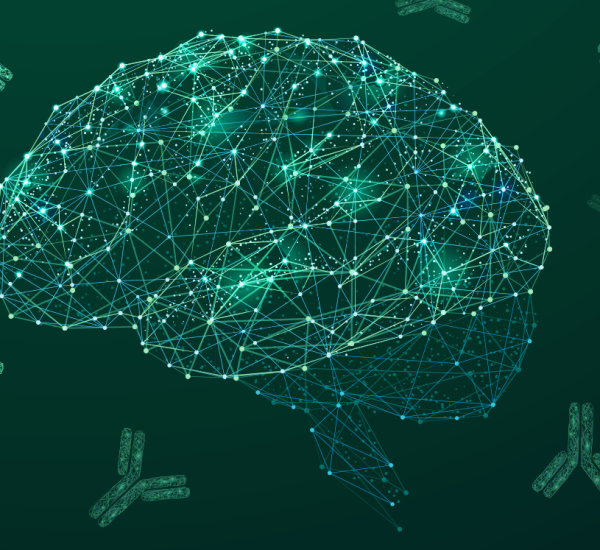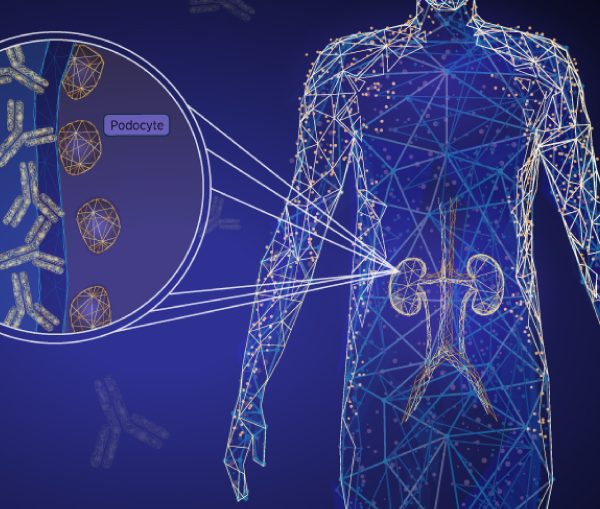Autoimmune neurological disorders encompass disorders of nervous system caused by dysfunction of the immune system. Through this process, the immune system attacks the nervous systems and autoantibodies are produced. These antibodies serve as biomarkers for such neurological disorders and play an important role in the diagnosis of autoimmune neurological syndromes. In recent years, the range of relevant autoantibodies in neurological syndromes has expanded rapidly, which helps to identify these disorders at an early stage. These autoantibodies can be detected in blood and cerebrospinal fluid (CSF)2. When the underlying cause of progressive neurological symptoms are unexplained, obtaining a comprehensive autoantibody analysis helps to secure a diagnosis and may even lead to the detection of a tumor in some cases3.
The role of autoantibodies in autoimmune neurological diseases diagnostic
Autoimmune neurological disorders can be diagnosed using autoantibody analysis, particularly in cases where no other cause can be found. These disorders typically have overlapping syndromes and many of the associated autoantibodies have a low positivity rate. For these reasons, it is recommended to perform a multiparameter antibody screen which looks for multiple antibodies in patient’s sample. Further, simultaneous analysis of CSF and serum is highly recommended for the highest detection rate. A multiparameter approach ensures a faster and more comprehensive diagnosis of autoimmune neurological disorders. Autoantibody diagnostic tests for neurological disorders include multiplex indirect immunofluorescence tests (based on tissue substrates and recombinant antigen-expressing cells), multiparameter immunoblot assays, enzyme-linked immunosorbent assay (ELISA) and radioimmunoassay (RIA)4.
Multiplex indirect immunofluorescence
Indirect immunofluorescence tests (IIFT), using thinly sliced sections of a variety of tissues such as nerves, cerebellum, hippocampus, and intestine allow for the detection of a broad range of autoantibodies against different target antigens. In addition, IIFT screening can help to identify autoantibodies against unidentified antigens1. Specific autoantibodies against target antigens are detected using cell substrates that express the target antigens on their surface to bind with specific autoantibodies. Depending on the patterns resulted from antibody/antigen interaction, the presence or absence of these antibodies are confirmed. EUROIMMUN BIOCHIP technology is a multi-section testing platform where target antigens are expressed on tissue/cells that are bound to a small glass chip. This multiparameter testing system allows for a comprehensive antibody analysis in a single run.
Multiparameter immunoblots
Immunoblot testing is used for multiparameter detection of monospecific autoantibodies in neurological disorders5. Natural and artificially induced antigens can be present in a single test strip for a multiparameter evaluation. Immunoblot tests, which contain a broad range of antigens, are ideal for confirming autoantibody detection in paraneoplastic neurologic syndromes (PNS) following initial immunofluorescence screening. Immunoblot tests are more convenient and require less expertise compared to IIFT. EUROIMMUN’s immunoblot (EUROLINE) profile contains twelve target antigens, allowing for a comprehensive analysis of PNS-associated autoantibodies.
PNS detection using autoantibody testing
Paraneoplastic neurological syndromes (PNS) are rare autoimmune disorders affecting patients with cancer. PNS occur in approximately 10% of patients with lung cancer7. As the body attempts to eliminate tumor cells, it can also target normal neural tissues in the brain through an immune response. This response may involve either production of specific antibodies or T cells. Patients with paraneoplastic disorders are likely to possess multiple autoantibodies, therefore it is critical to perform comprehensive antibody screening for reliable diagnosis. High-risk antibodies in PNS predominantly target intracellular antigens, and include Hu, Ri, Yo, amphiphysin, CV2, SOX1, Ma/Ta, recoverin, Zic4, titin, ITPR1 and CARP. In serological diagnostics, autoantibodies in PNS should always be determined using two unrelated methods. EUROIMMUN offers IIFT with special BIOCHIP Mosaics and a variety of line blots (EUROLINE) for PNS autoantibody detection.
Autoimmune encephalitis antibody testing
Autoimmune encephalitis (AE) is defined as a group of inflammatory disorders in which the host immune system targets self-antigens expressed in the central nervous system (CNS). Patients with autoimmune encephalopathies exhibit autoantibodies against neuronal cell surface antigens8. Since these antigens play a direct or indirect role in synaptic signal transduction, the disorder manifests with seizures and neuropsychiatric symptoms. Early diagnosis of AE is critical for rapid institution or escalation of immunotherapy, refinement of disease prognostication and for avoiding unnecessary testing. EUROIMMUN’s IIFT for AE encompasses six target antigens (NMDAR, CASPR2, AMAR1/2, LGI1, DPPX and GABAB1/B2) which allows for a comprehensive assessment of AE autoantibodies.
Perspective
Detection of neural antibodies can significantly impact diagnosis and patient management; therefore, autoantibody testing needs to be ordered early in the evaluation. However, test results must be interpreted within the clinical context and the presence of neural autoantibodies should not be considered as conclusive evidence of neurological disorders. Additionally, it’s important to emphasize that failure to detect a neural autoantibody does not rule out the presence of autoimmune neurological diseases. The field of autoimmune neurology is constantly evolving, and more autoantibodies are being identified, contributing to more accurate diagnosis of autoimmune neurological disorders. By discovering new antibodies, there’s a need to expand testing parameters to include more antibodies for a comprehensive analysis.
References
- Prüss, Harald. “Autoantibodies in neurological disease.” Nature reviews immunology 21.12 (2021): 798-813.
- Lancaster E, Dalmau J. “Neuronal autoantigens–pathogenesis, associated disorders and antibody testing. Nat Rev Neurol.” 2012;8(7):380-390.
- Graus F, Vogrig A, Muñiz-Castrillo S, Antoine JG, Desestret V, et al. “Updated diagnostic criteria for paraneoplastic neurologic syndromes”. Neurol Neuroimmunol Neuroinflamm 2021; 8(4): e1014
- Waters et al. Handbook of Clinical Neurology, Vol. 133, Chapter 9, pgs.147-163
- Ricken, Gerda, et al. “Detection methods for autoantibodies in suspected autoimmune encephalitis.” Frontiers in Neurology (2018): 841.
- Waters, Patrick, Philippa Pettingill, and Bethan Lang. “Detection methods for neural autoantibodies.” Handbook of Clinical Neurology 133 (2016): 147-163.
- Kanaji, Nobuhiro et al. “Paraneoplastic syndromes associated with lung cancer.” World journal of clinical oncology 5,3 (2014): 197-223. doi:10.5306/wjco.v5.i3.197
- Ellul, Mark A et al. “Update on the diagnosis and management of autoimmune encephalitis.” Clinical medicine (London, England) vol. 20,4 (2020): 389-392. doi:10.7861/clinmed.2020-0241





